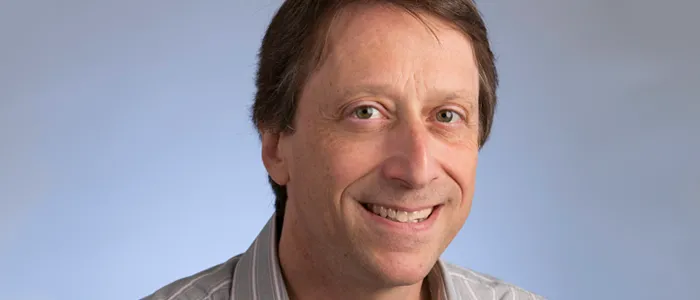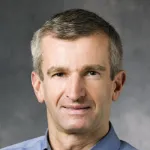
Photo by Mark Tuschman: Dr. Bill Weis.
Stanford Medicine News Center - September 11th, 2014 - by Bruce Goldman
William Weis, PhD, the William M. Hume Professor in the School of Medicine, has been appointed chair of the Department of Structural Biology. He replaces Joseph “Jody” Puglisi, PhD, professor of structural biology, who stepped down Sept. 1 after leading the department for 10 years.
“With two Nobel Prize winners on its faculty, four National Academy of Sciences members and three Royal Society members, the Department of Structural Biology is a globally acknowledged powerhouse. That’s in no small part due to Jody’s efforts,” said Lloyd Minor, MD, dean of the School of Medicine. “Bill’s record of impressive accomplishments and connectedness to multiple areas of research makes him ideally suited to moving the department even further forward.”
Weis holds professorships in structural biology and molecular and cellular physiology. He is also professor and chair of photon science at the SLAC National Accelerator Laboratory.
“Bill is an outstanding scientist, one of the best X-ray crystallographers in the world,” Puglisi said. “He combines a deep knowledge of the underlying biology in the complex systems he investigates. He is organized, widely respected, committed to our department and has a vision for where structural biology needs to go. He will be a fantastic chair.”
Weis earned a PhD at Harvard in 1988. He completed postdoctoral fellowships at Yale under Axel Brunger, PhD, who now chairs Stanford’s Department of Molecular and Cellular Physiology, and at Columbia. He joined Stanford’s faculty in 1993 as an assistant professor of structural biology and was promoted to associate professor in 1999.
In 2004, Weis was awarded full professorships in structural biology, molecular and cellular physiology and photon science.
Weis credited his predecessor for maintaining a high standard of departmental excellence.
“Jody brought our department into important areas of biological spectroscopy, and he strengthened our very strong expertise in X-ray crystallography and computational methods,” Weis said. “I am anxious to expand further our department’s breadth by moving us into new areas of molecular and cellular structure and function, and furthering connections with the SLAC National Laboratory.”


